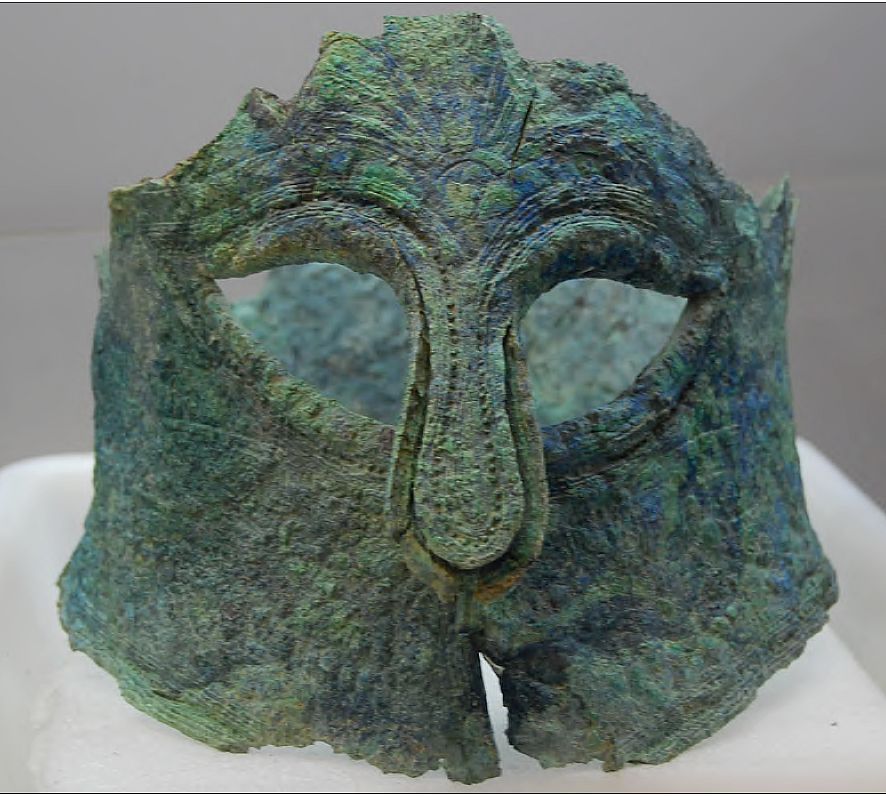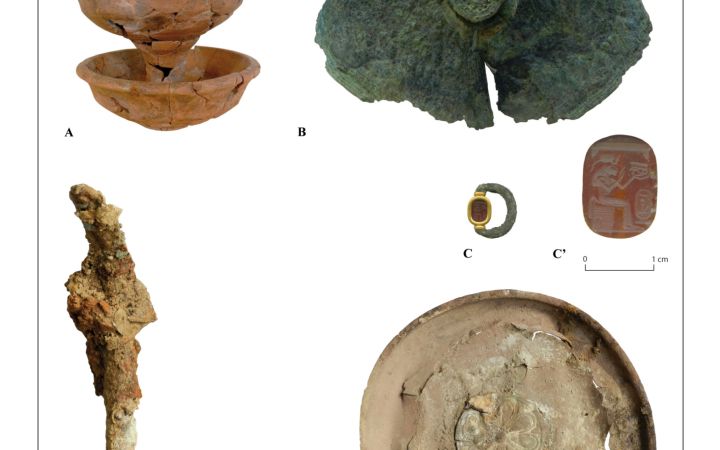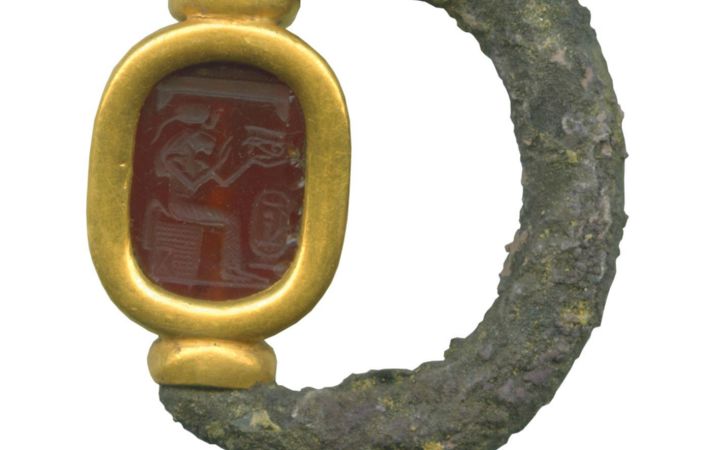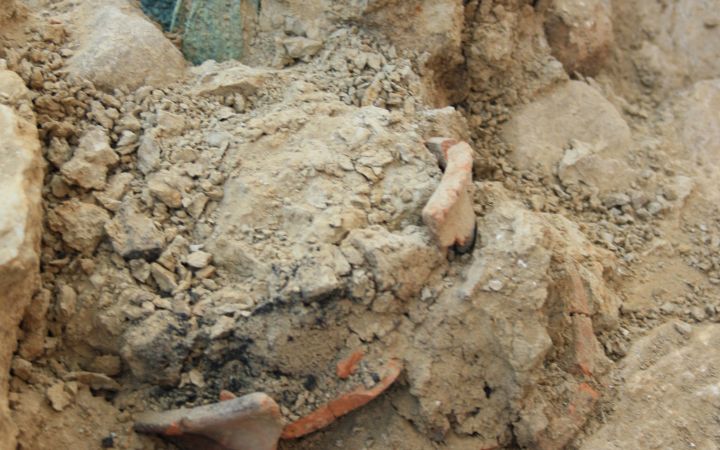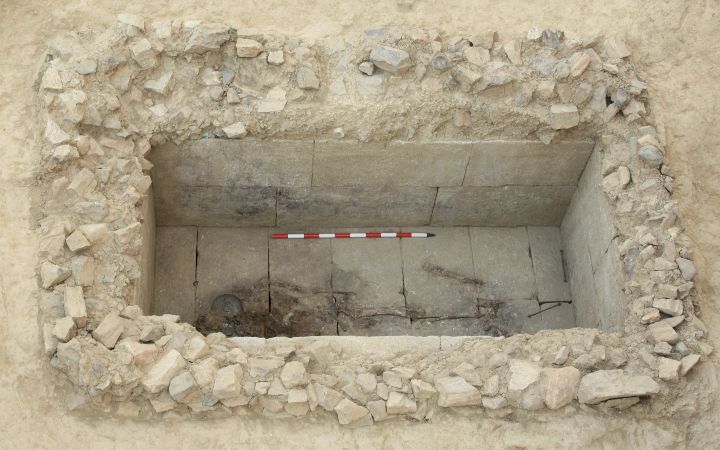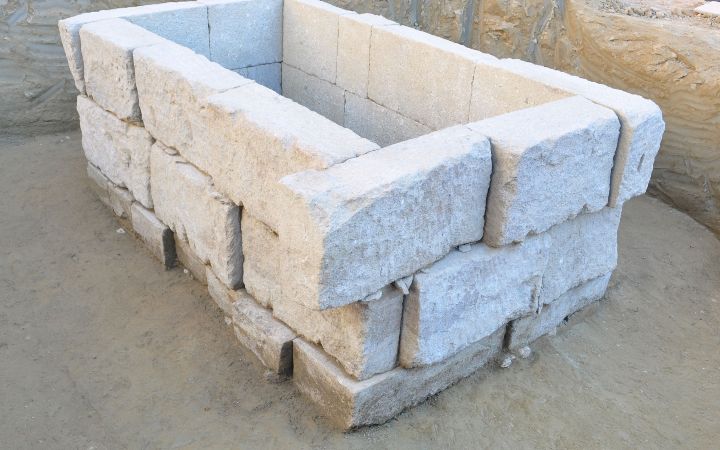TUMBA DEL GUERRERO
MUSEO ARQUEOLÓGICO
El Museo de Málaga alberga la conocida como “Tumba del Guerrero”, uno de los mejores restos arqueológicos de época fenica hallados hasta la fecha en la Península Ibérica.
En 2012, durante una excavación arqueológica en un solar entre las calles Jinete y Refino del casco histórico malagueño fue descubierta esta tumba, datada del siglo VI a.C. y conservada intacta, situada extramuros de la entonces ciudad fenicia de Malaka. Se trata de un hallazgo fortuito dado que sólo se conocían restos escasos de incineraciones fenicias en calle Altozano, a unos 300 metros de distancia de este lugar.
La cámara mortuoria se albergaba en una fosa abierta en el terreno natural, dispuesta con orientación este-oeste, conformada por 21 sillares de piedra arenisca local, perfectamente trabajados, que cubrían el suelo y los cuatro laterales con dos hiladas, llenándose con mampostería el espacio entre la fosa y tumba. Respecto a su cubierta, se plantea que ésta se resolviera con un tejado de madera plano o a dos aguas.
Aunque los restos óseos hallados se conservaban en muy mal estado, su análisis antropológico permitió determinar que correspondían a un varón de unos 40 años de edad y una altura entre 1,70 y 1,80 metros. Junto a ellos fue documentado el ajuar asociado a la tumba constituido, entre otros elementos, por un colgante con un escarabeo grabado (amuleto que representa al escarabajo egipcio), un plato de plata a la izquierda del cráneo y una punta de lanza de hierro inutilizada. En el exterior, próximo a la cabecera, fue descubierto un casco de bronce, propio de un guerrero griego, acompañado de un quemaperfumes.
Cabe destacar la relevancia del casco griego de tipo corintio (siglo VI a.C.) por ser el único encontrado in situ, formado parte ritual de inhumación, en España.
Todos estos elementos hacen de este conjunto un descubrimiento excepcional.
Directores de la actividad:
David García González
Ana Belén Moreno Ortega
(Arqueosur, Estudio Arqueología, S.L.)
TOMB OF THE WARRIOR
ARCHAEOLOGICAL MUSEUM
The Museum of Málaga houses the " Tomb of the Warrior" ("Tumba del Guerrero"). This is one of the best archaeological remains from the Phoenician period found to date in the Iberian Peninsula.
In 2012 this tomb was discovered during an archaeological excavation in a site between Jinete and Refino Streets in the historic centre. The tomb is dated to the 6th century BC and is located outside the walls of the Phoenician city of Malaka. This is a fortuitous discovery since only a few remains of Phoenician cremations were known in Altozano Street, about 300 metres away from this site.
The burial chamber was housed in an open pit in the natural terrain and was arranged in an east-west orientation. It was formed by 21 ashlars of local sandstone, perfectly worked, which covered the floor and the four sides with two courses. The space between the grave and the tomb was filled with masonry. Regarding its roof, it is thought that it was solved with a flat or gabled wooden roof.
Although the skeletal remains found were in a very poor state of preservation, their anthropological analysis determined they belonged to a male of about 40 years of age and a height of between 1.70 and 1.80 metres. Along with them were documented the grave goods associated with the tomb. This trousseau contained a pendant with an engraved scarab (amulet representing the Egyptian scarab beetle), a silver plate to the left of the skull and an unused iron spearhead, among other items. On the outside, near the head of the tomb, was discovered a bronze helmet, typical of a Greek warrior, with a perfume burner.
The relevance of the Greek helmet of Corinthian type (6th century BC) is worth mentioning because it is the only one found in the site, as part of a ritual burial, in Spain.
All these elements make this an exceptional discovery.
Activity Directors:
David García González
Ana Belén Moreno Ortega
(Arqueosur, Estudio Arqueología, S.L.)

